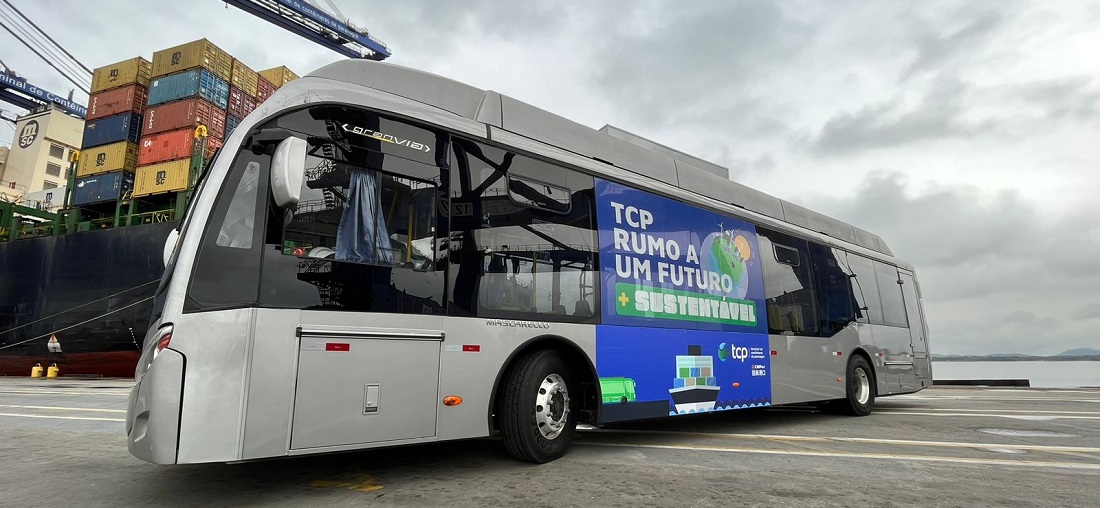
Paranagua Container Terminal unveils its first electric bus
Aug, 31, 2023 Posted by Gabriel MalheirosWeek 202336
Last Tuesday (29), the company that operates the Paranaguá Container Terminal (TCP) received its first 100% electric vehicle. The model D9W 20.410, manufactured by the Chinese brand BYD, is completely silent and emits zero CO2 emissions. It offers a range of 250 km per charge and features regenerative braking, which assists in recharging the battery every time the brakes are applied.
Fernando Reis, Maintenance Manager at TCP, points out that “another advantage observed in choosing this model is the pneumatic suspension, which allows lowering the vehicle’s height for easier passenger entry or raising the bus to overcome obstacles on the road.”
Due to safety measures and the large space of the terminal, currently spanning 480,000 m², buses are the primary means of transportation used within TCP to move employees to their workstations. With the new electric model, the current fleet now consists of three vehicles.
Another recent sustainable initiative by the company was the electrification of two Rubber-Tired Gantry Cranes (RTGs) used to handle containers arriving at the terminal via rail. These investments are part of the terminal’s strategy to reduce greenhouse gas emissions, making operations more sustainable.
The electrification process of the two RTGs, completed on August 29, took three months. “In addition to a 95% reduction in CO2 emissions for each piece of equipment, the conversion also translates to a 90% decrease in maintenance costs, resulting in improved reliability and machine availability,” explains Fernando.
These RTGs have also been equipped with a new automation system responsible for transverse correction (auto-steering), ensuring that the operator no longer needs to manually control the equipment’s direction along the tracks. Currently, TCP has 29 RTGs, with an additional 11 expected to arrive by the end of 2023.
In 2022, TCP invested over R$ 370 million in infrastructure projects and the acquisition of new equipment, including purchasing 11 new RTGs, expanding the reefer area, and enlarging the gate. Presently, the terminal’s maximum handling capacity is 2.5 million TEUs per year.
-
Other Cargo
Nov, 04, 2022
0
Cotton: Brazil exports 260,142K tonnes in October
-
Trade Regulations
Aug, 29, 2023
0
Brazil signals strengthening WTO, sustainable agenda at G20 meeting
-
Ports and Terminals
Dec, 08, 2022
0
Parana state ports record 54 mln t in 2022, up 2%
-
Ports and Terminals
Sep, 25, 2024
0
Norcoast Commences Operations in Itacoatiara in Partnership with Super Terminais

